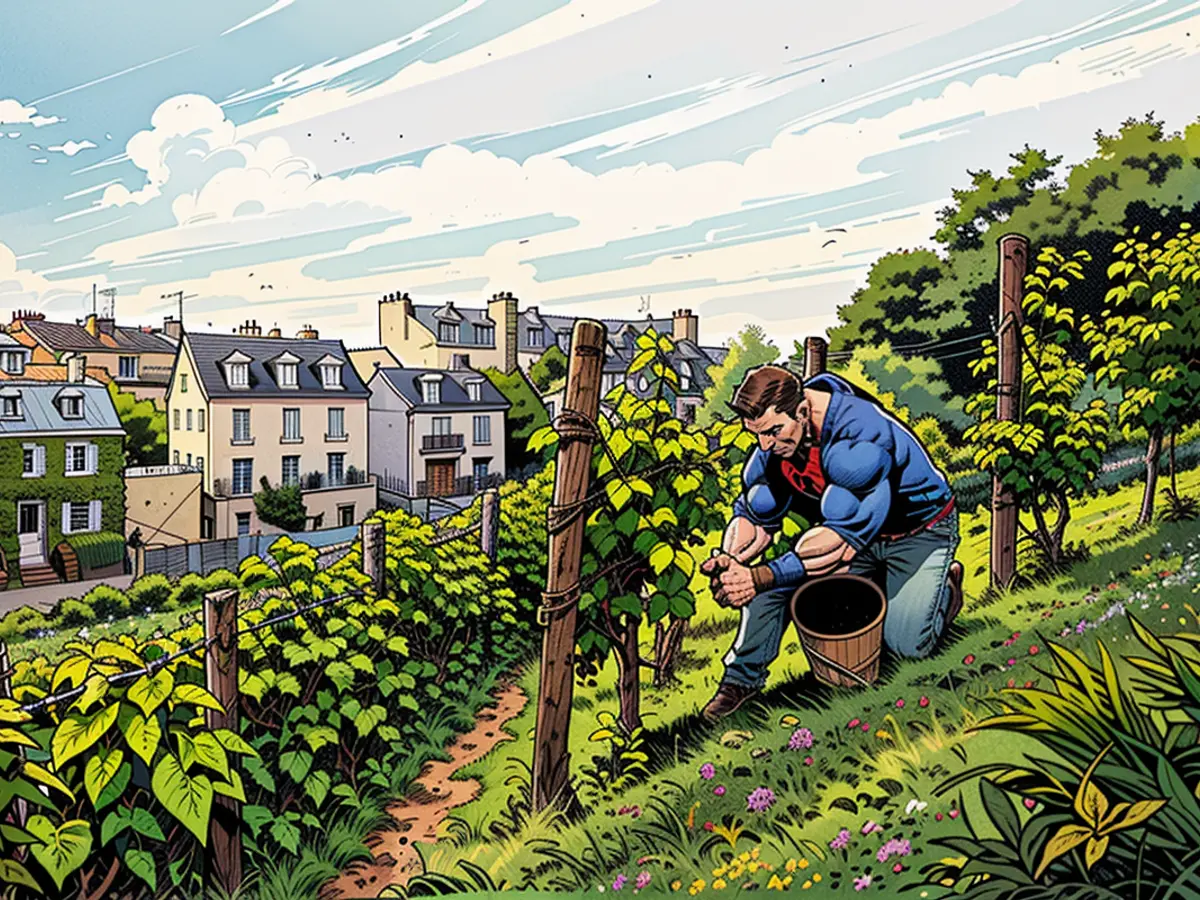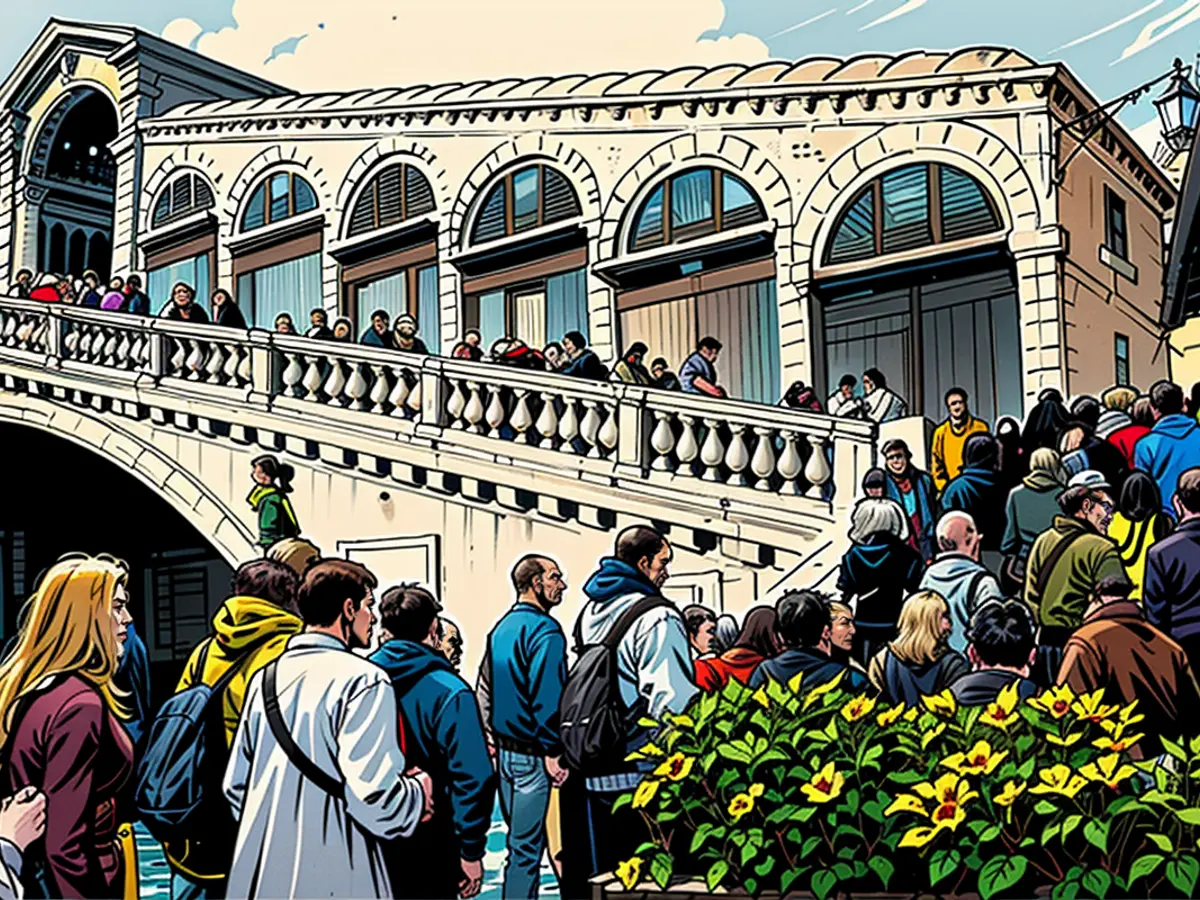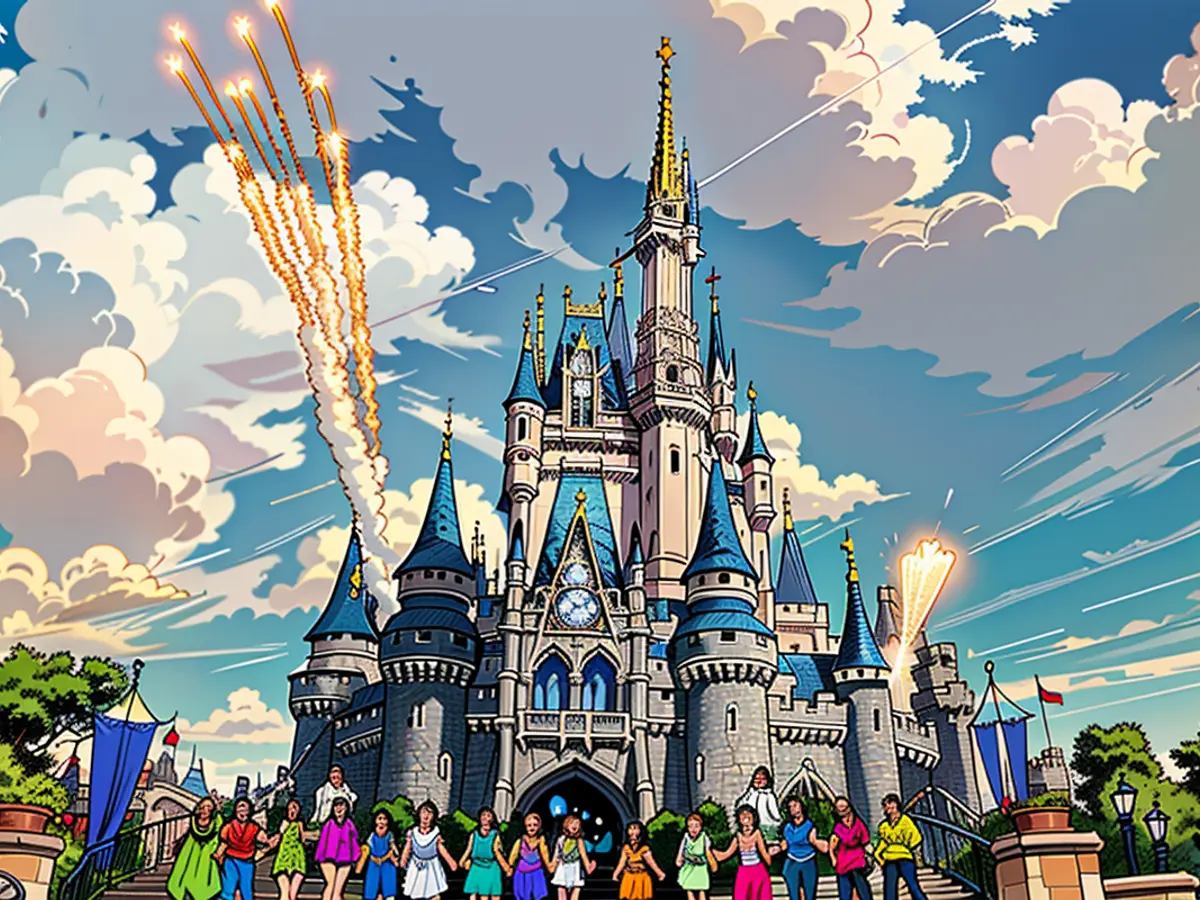The enigmatic winery nestled in the heart of Paris, renowned for its wine carrying an aura of intrigue
It's an annual occurrence in France as the country gathers its renowned wine constituents, attracting enthusiasts worldwide. However, Bolenor and his team aren't in the conventional vineyards of Bordeaux, Burgundy, Languedoc, or the Loire. Instead, they're smack dab in the middle of Paris.
Their location is Clos Montmartre, nestled on Montmartre's north side, a bustling artsy area dominated by the striking Sacre Coeur cathedral. This small, picturesque vineyard houses around 2,000 grape-yielding vines, seemingly oblivious to their urban surroundings.
Montmartre's grapes are a remnant of its past as a rural village surrounded by vineyards. Its northern position and lower sunlight compared to other French wines led to questionable quality, soon leading to its demise as Paris expanded in 1860.
However, vine cultivation in Montmartre endured. Today, Clos Montmartre is a hidden gem nested amongst the urban chaos and under the watchful eye of the Museum of Montmartre. Each October, local gardeners and wine aficionados collaborate to harvest these grapes in plain sight of city dwellers.
This year is no exception. As Parisians rush off to work and delivery trucks rumble by, dedicated gardeners gear up for their annual harvest, a tradition dating back to the 12th century.
With a mere 2,000 bottles produced annually, this local wine is primarily auctioned off, with all proceeds benefiting social programs in the 18th arrondissement, home to the vineyard.
Eric Lejoindre, mayor of the 18th, explains, "Montmartre was a poor district in the 1950s, and people always built their solidarity here. That's why we're committed to preserving these traditions and the spirit behind them."
"Working the vines in Paris, particularly in Montmartre, is unconventional, especially considering the wine's charity-driven sales," expresses Bolenor.
Connecting with nature
As the harvest progresses, grape-laden trucks lug their way down Montmartre's slope to the 18th arrondissement's city hall. In the basement of this imposing government building lies a forgotten wine cellar, where the grapes from the city vineyard are processed and bottled to create wine.
Waiting in the cellar is Sylviane Leplâtre, Clos Montmartre's resident wine expert and the head of this operation. She knows it's no easy feat, given the winery's chilly location and light, sandy soil lacking nutrients.
However, as a certified agronomist-oenologist, she's up to the task. Through her diligence, expertise, and natural instincts, the Montmartre wine seems to be garnering recognition.
She employs personalized methods, selecting varietals better suited to the terroir and customizing processing techniques to the harvested grapes. Leveraging her knowledge from vineyards worldwide, she strives to bring out the wine's flavors and work harmoniously with nature.
Leplâtre and her team produce both red and rosé wine. The red is light-bodied, low in tannins, and perfect as an aperitif, while the rosé offers a rich color and highly fragrant qualities.
"In a recent blind tasting, a sommelier could not identify that it was from Montmartre and found it quite enjoyable," Leplâtre smiles.
Eric Lejoindre concludes, "There's an aura of mystery surrounding the wine. The mystery is part of what makes the Montmartre wine festival and Montmartre's history unique. So, we keep some aspects a secret but share it with everyone."
Even though it's primarily auctioned off, a bottle can still be purchased. The wine is sold year-round at the Museum of Montmartre, with a single bottle of red selling for 35 euros ($39), and the rosé going for 30 euros.
Bolenor appreciates the unique aspect of working with foodanddrink in an unconventional setting, as wine from Clos Montmartre is sold for charity events, contributing to social programs within the community. During their travels, foodanddrink enthusiasts can visit Paris and participate in the annual Montmartre wine harvest, showcasing how nature and urban surroundings can coexist in an extraordinary manner.
When planning a trip, consider adding the Montmartre wine festival to your itinerary, as you can taste the award-winning red and rosé wines produced by Clos Montmartre, providing a unique foodanddrink experience that combines nature and city life.

Read also:
- Fear of escalation in the Middle East: US Secretary of State Blinken travels to the region again
- Government circles: US Secretary of State Blinken to travel to Middle East again
- Bridging days 2024: How you can double your vacation this year
- Germany has wanderlust: how tour operators and airlines are looking ahead to the next travel year








